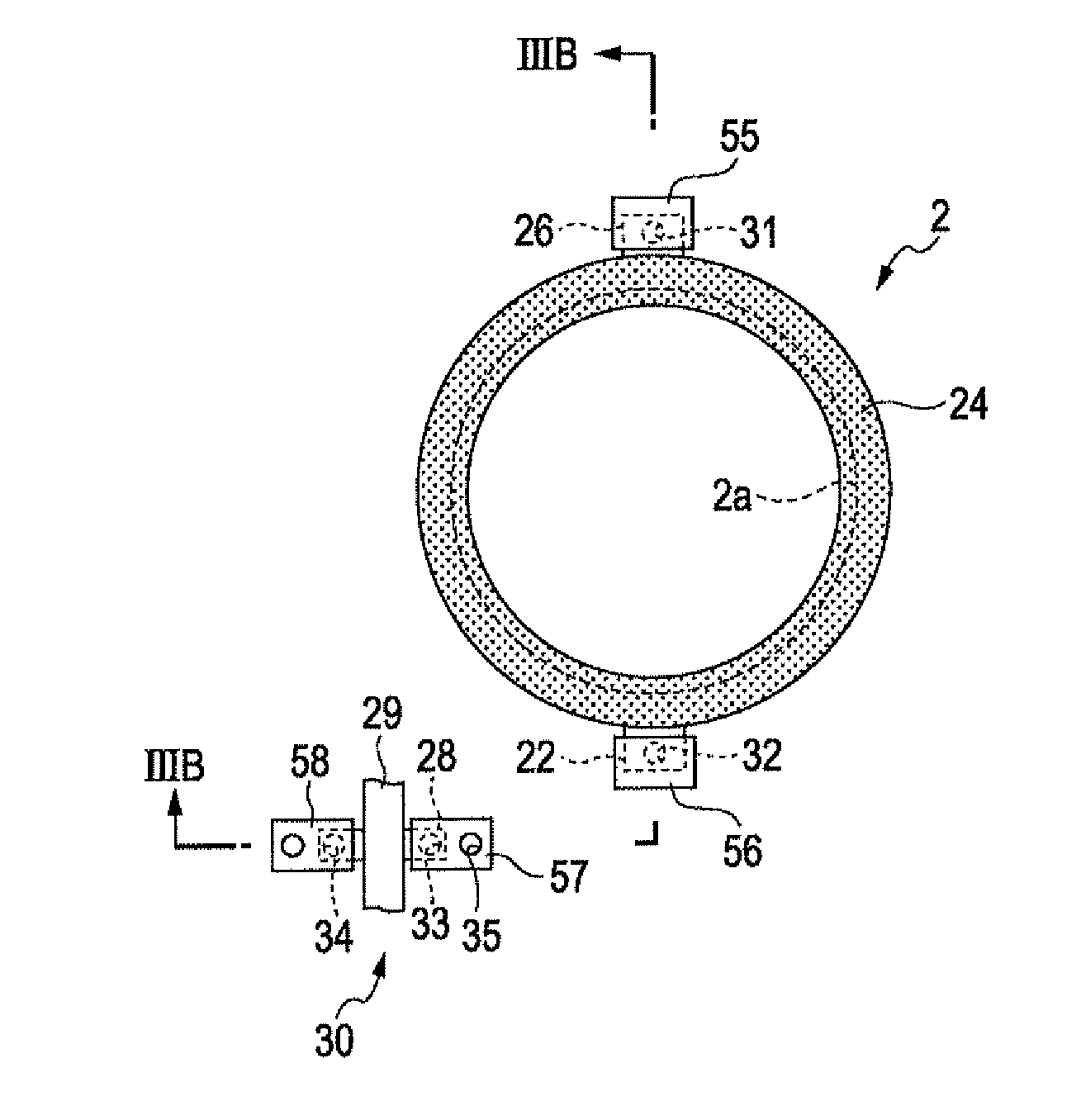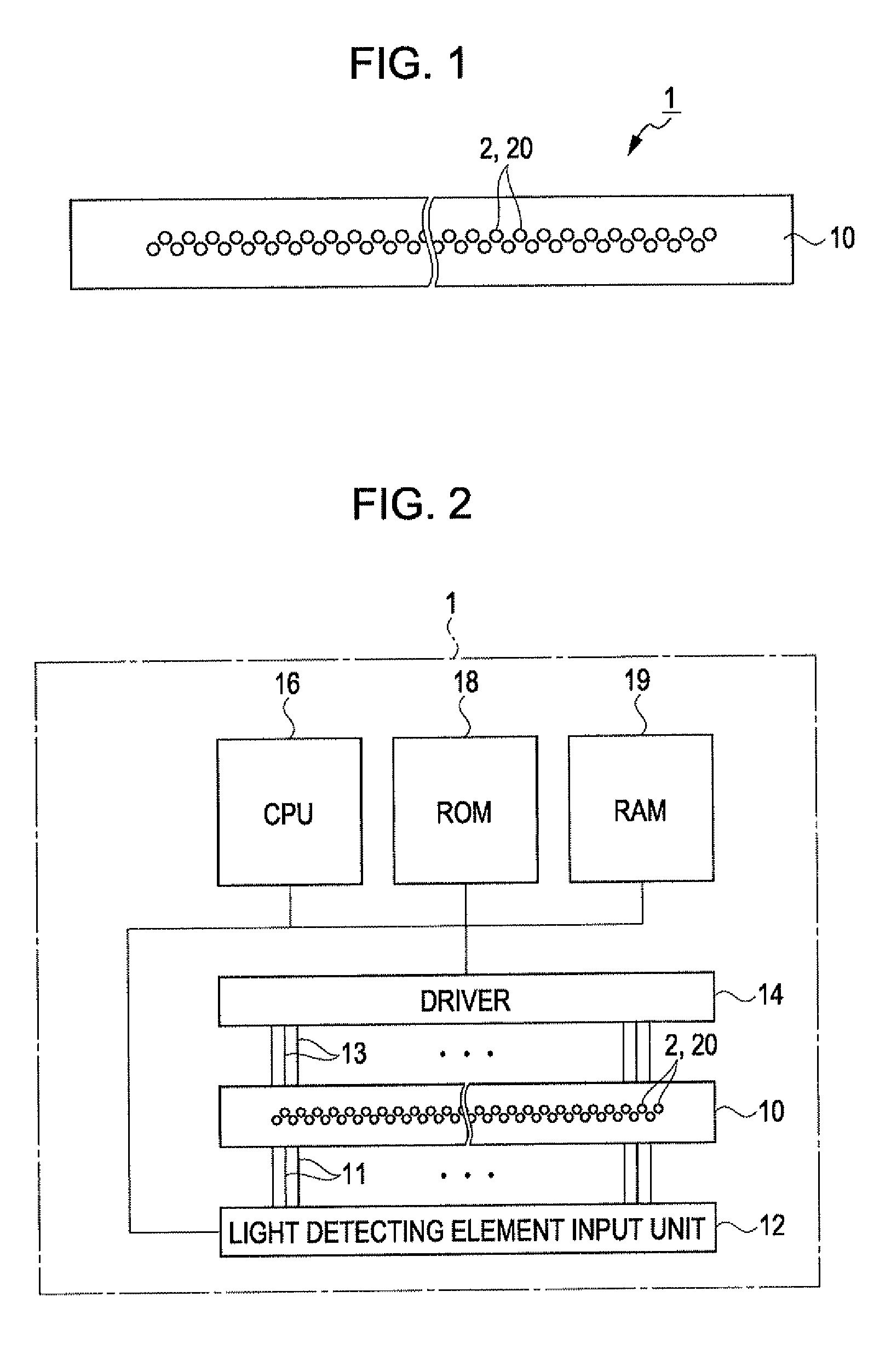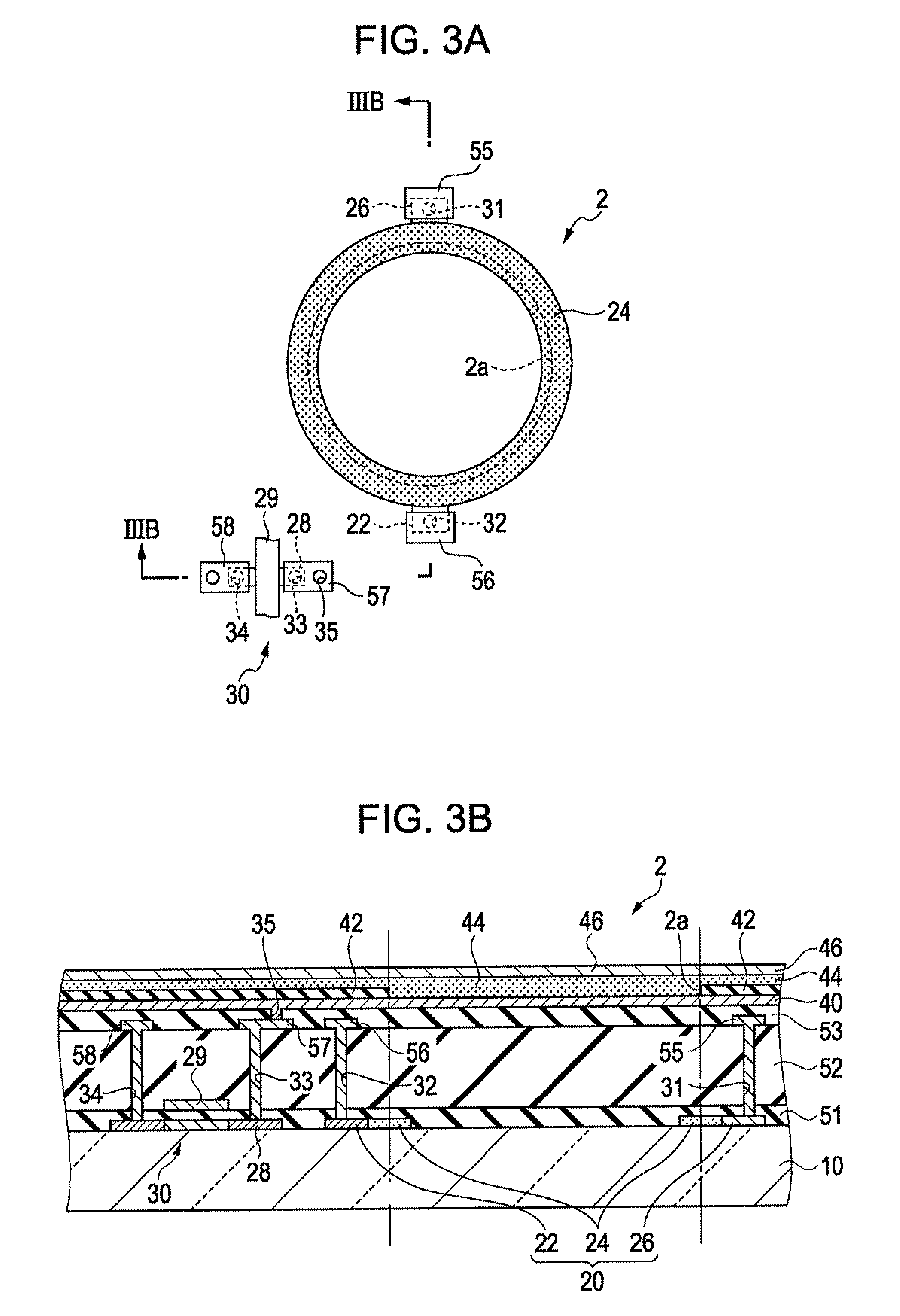Light emitting device and electronic apparatus
a technology electronic devices, which is applied in the direction of solid-state devices, semiconductor devices, printing, etc., can solve the problems of deterioration of characteristics, decrease in resolution, and decrease in the intensity of light output of light emitting devices, and achieve high image quality
- Summary
- Abstract
- Description
- Claims
- Application Information
AI Technical Summary
Benefits of technology
Problems solved by technology
Method used
Image
Examples
first embodiment
[0038]FIG. 1 is a plan view of an organic EL device 1 as a light emitting device. The organic EL device 1 is configured to have a substrate 10 having transparency as a base body. The organic EL device 1 has a plurality of light emitting elements 2 that are formed to form a row on the substrate 10. Each light emitting element 2 is electrically connected to a drain of a thin film transistor (hereinafter, abbreviated as a TFT) element 30 (FIG. 3B) and emits light having light intensity corresponding to the magnitude of a current flowing through the TFT element 30. To a gate of the TFT element 30, a first capacitor element (not shown) is electrically connected.
[0039]In addition, on the substrate 10, a light detecting element 20 is formed near each light emitting element 2. The light detecting element 20 is configured to include a pin diode having a p-type semiconductor layer 22, a sensitivity area 24, and an n-type semiconductor layer 26 (FIG. 3). In addition, the light detecting elemen...
second embodiment
[0063]Subsequently, a second embodiment of the invention will be described. According to this embodiment, an area included in the light detecting element 20 for forming the sensitivity area 24 is different from that according to the first embodiment, and other configurations and advantages of the configurations are the same as those according to the first embodiment. Hereinafter, the second embodiment will be described with a difference between the first and second embodiments primarily focused.
[0064]FIGS. 4A and 4B are diagrams showing a light emitting element 2 and a light detecting element 20 according to the second embodiment. FIG. 4A is a plan view, and FIG. 4B is a cross-section view taken along line IVB-IVB shown in FIG. 4A. As shown in FIG. 4A, in this embodiment, the light detecting element 20 is formed on an outer side of the light emitting element 2 in a plan view, and the outer frame 2a of the light emitting element 2 coincides with a part of the outer frame of the light...
third embodiment
[0066]Subsequently, a third embodiment of the invention will be described. In this embodiment, areas for forming the p-type semiconductor layer 22 and the n-type semiconductor layer 26 of the light detecting element 20 are different from those of the first embodiment, and other configurations and advantages of the configurations are the same as those according to the first embodiment. Hereinafter, the third embodiment will be described with a difference between the first and third embodiments primarily focused.
[0067]FIGS. 5A and 5B are diagrams showing a light emitting element 2 and a light detecting element 20 according to the third embodiment. FIG. 5A is a plan view, and FIG. 5B is a cross-section view taken along line VB-VB shown in FIG. 5A. As shown in FIG. 5A, in this embodiment, the p-type semiconductor layer 22 of the light detecting element 20 is formed along the outer frame 2a of the light emitting element 2 in an area overlapped with the light emitting element 2 in a plan ...
PUM
 Login to View More
Login to View More Abstract
Description
Claims
Application Information
 Login to View More
Login to View More - R&D
- Intellectual Property
- Life Sciences
- Materials
- Tech Scout
- Unparalleled Data Quality
- Higher Quality Content
- 60% Fewer Hallucinations
Browse by: Latest US Patents, China's latest patents, Technical Efficacy Thesaurus, Application Domain, Technology Topic, Popular Technical Reports.
© 2025 PatSnap. All rights reserved.Legal|Privacy policy|Modern Slavery Act Transparency Statement|Sitemap|About US| Contact US: help@patsnap.com



